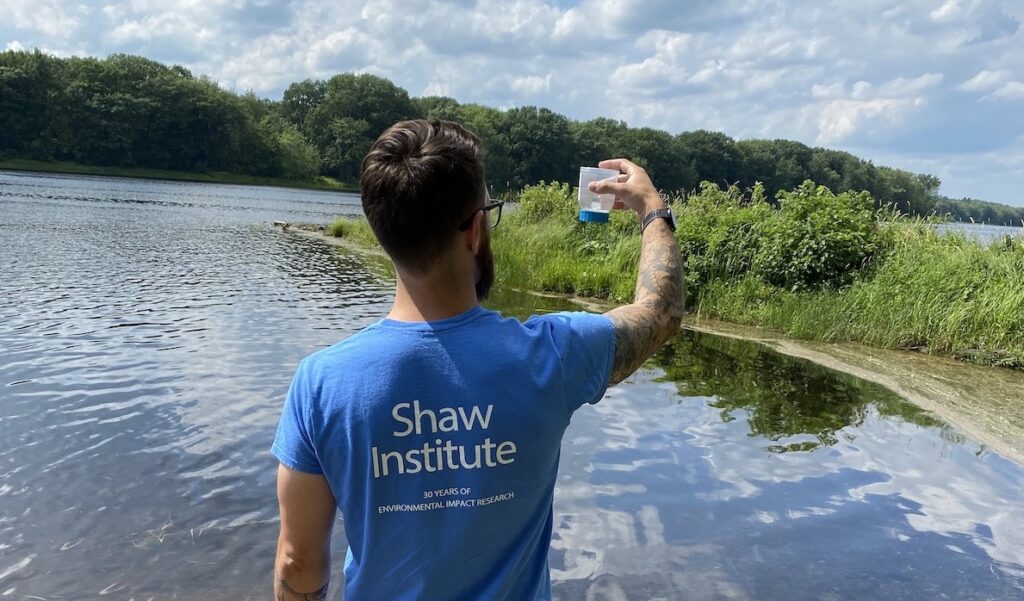At Least 99% of Americans Have PFAS Chemicals In Their Blood
Although it’s been a well-known issue to activists and researchers for more than several years, awareness of the negative impact of PFAS chemicals on human health, wildlife and the environment is just now starting to permeate the general public.
In fact, I’ll predict here – just as “climate change” and “plastic pollution” have been in recent years – that “PFAS” will indeed become the environmental buzz word of 2023. And it should be.
Which, of course, begs the question: Why?
On the surface, PFAS includes a pretty useful collection of chemicals that make our human existence quite convenient – even safer – and has been doing so since at least the early 1950s. It’s used in such things as firefighting foam, stain-resistant carpeting, waterproof clothing, non-stick cookware, and the production of semiconductor chips that power pretty much every piece of technology we lay our hands on.
Sounds pretty damn good, right? It does … until it doesn’t.

It really starts with what PFAS stands for: per- and polyfluoroalkyl substances. That’s enough to scare me off, especially when you consider that these human-made materials are also often referred to as “forever chemicals”. They are biopersistent, which is science-speak for the fact that they remain in organisms (aka, us!) indefinitely without breaking down. In addition, they are bioaccumulative, which is another fancy word that means over time they build up at increasing rates in people, wildlife and the environments that we all share.
So What’s the Big Deal?
PFAS chemicals are linked to any number of health issues, including increased incidence of cancer, liver and kidney disease, reproductive issues, immunodeficiencies, and hormonal disruptions. Obviously, it doesn’t take a doctorate degree from Yale to realize that you probably want to avoid exposure to these forever chemicals by any means necessary, but that’s not so easy.
“The reality is that PFAS chemicals are everywhere,” said Dr. Charlie Rolsky, Senior Research Scientist at the Shaw Institute in Blue Hill, Maine. “Whether you’re a human or a member of the wildlife kingdom, you’re being exposed to PFAS chemicals often via food, water, soil, air, the everyday products we use or those that pollute the environment. And not just some of us …most of us!”
Rolsky points out that the facts are pretty staggering, citing studies that tell us the following:
- PFAS pollutes drinking water sources used by over 200 million Americans.
- 99% of Americans, including infants, have PFAS in their blood.
- 100% of fish tested in Michigan rivers contained PFAS.
- 100% of rivers tested in Maine contained PFAS.
- PFAS has been found in over 330 species of wildlife
“This stuff is toxic at incredibly low levels and it’s persistent — it stays there for hundreds of years in the groundwater, thousands of years,” said Graham Peaslee, a Notre Dame professor and researcher who’s tested many products for PFAS in his lab, in an interview with PBS. “And that means the next generations will be drinking it, and that’s not the kind of legacy we want to leave our kids.”
What’s really frustrating is that PFAS shows no mercy for the vulnerable. Studies show that underserved and underdeveloped communities suffer greater levels of exposure, as do first responders, such as firefighters and EMS. And the innocent certainly don’t get a pass – such as infants or wildlife, neither of whom have played any role in PFAS pollution.
“What makes the situation even more challenging is that there is little stability when it comes to understanding what safe levels of PFAS are,” said Rolsky. ‘Due to new research coming out daily, the EPA is constantly changing the definition for advised PFAS level intake and that change usually amounts to lowering the hazard advisory threshold to miniscule amounts”.
What Can Be Done?
In short, the primary responsibility must fall on government, at both the state and federal level, as they are taxed with protecting their citizens and communities from threats; and also on the corporations that either use PFAS chemicals in their manufacturing process or produce PFAS-based products that are marketed to those same citizens and communities – who are almost always unaware of the toxins that they are being exposed to.
Although much work is still to be done, we have seen some small victories that indicate a shift toward recognizing the problem and a desire to solve it. Those include:
- The Biden Administration made PFAS one of the key elements of its environmental agenda, including $5 billion in funding, via the Bipartisan Infrastructure Law, to protect safe and clean water in disadvantaged communities.
- The EPA has established a Council on PFAS and has released their Strategic Roadmap for addressing the issue through 2024.
- The EPA is expected to propose restrictions on harmful “forever chemicals” in drinking water after finding they are dangerous in amounts so small as to be undetectable. Currently under White House review.
- The State of California’s ban on PFAS in food packaging took effect on January 1, 2023.
- On March 2, a North Carolina court denied chemical giant Chemours’ motion to dismiss a ‘forever chemicals’ lawsuit against them. The lawsuit alleges Chemours is responsible for decades of discharging “vast quantities” of the toxic chemicals from its Fayetteville Works site into the Cape Fear River watershed, which provides drinking water for roughly 1.5 million North Carolina residents.
- REI, a leading outdoor retailer, announced on February 21 that it will ban PFAS in all textile products and cookware from its suppliers, in a major update to its “Product Impact Standards” for its 1,000+ brand partners.
- McDonald’s has pledged to remove all PFAS from its food packaging by 2025.
- On December 20, 2022, 3M announced it will stop producing PFAS chemicals by 2025, a move prompted by being confronted with regulatory pressure and lawsuits that threaten billions of dollars in damages.

As somebody who co-founded and spent several years in top leadership at Plastic Oceans International, and as a co-founder and board member of The Social Forestry Foundation, I can say with some authority that a holistic approach must be taken. Yes, legislation and corporate regulation must be at the forefront of efforts, but we must do so with the following approach:
- Look at the full lifecycle of PFAS. In order to understand the impact of these 10,000+ chemicals, and how to best solve the problem, we must better understand their makeup, their production process, and their many paths to contaminating the environment in the first place.
- Think Upstream as much as we do Downstream. We often get too focused on the downstream aspects of these environmental pollutants. To solve the problem, you have to give equal time to the upstream realities. Probably more time. For those not familiar with these terms, think supply (Upstream) and demand (downstream):
-
- Upstream – everything that went into the production of a product before it got to you, the consumer, including the extraction of natural resources, the manufacturing, the transportation, the packaging, the social impact, etc
- Downstream – everything that happens once that product has reached the consumer.
As the old saying goes in plumbing, the first priority is to turn off the tap (upstream), not mop up the mess (downstream.
- Support the science and trust it! Like the Shaw Institute, Waterkeeper Alliance and the Environmental Working Group, there are hundreds of great organizations and universities doing important work that will allow us to better test, measure, remove, and replace PFAS substances. Support those organizations and trust in the results they produce. So much is still unknown, so the research is a must in order to know just how bad the situation is.
- Accountability. As citizens, consumers, voters and community members, we must hold our governments accountable to protect us. They, in turn, must do so by holding corporations accountable. Legislation and regulation are a must.
- Be willing to absorb some pain. Yes, the burden should mostly fall on governments and corporations, but individuals must realize that the massive changes required will mean some sacrifice by the consumer, including higher costs and decreased convenience.
Resources
It’s impossible to cover all aspects of a topic like PFAS in a short article such as this one. Thus, I encourage you to take the time to educate yourself on the issue. It truly is impacting you, your family, your community, the wildlife you enjoy viewing and the environment that we all utilize and rely on. Here’s several great resources to help you start exploring the issue in more detail:
- EPA Roadmap on PFAS
- EPA: PFAS Explained
- Waterkeeper Report on PFAS Contamination in U.S. Surface Waters
- PFAS-Free products
- CDC PFAS Fact Sheet
PFAS pollution has been a threat decades in the making, and it may very well take decades to fully solve the problem. Doing so won’t be cheap and it won’t be painless, but it’s a challenge that must be met now.
IF YOU FOUND THIS ARTICLE TO BE OF VALUE, PLEASE CONSIDER A DONATION TODAY.




